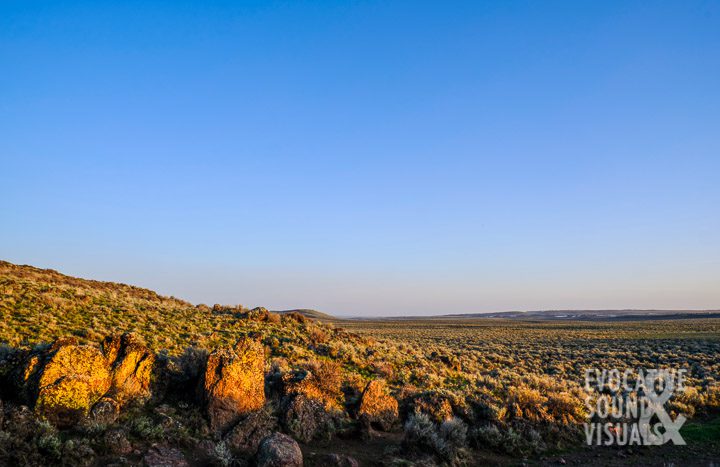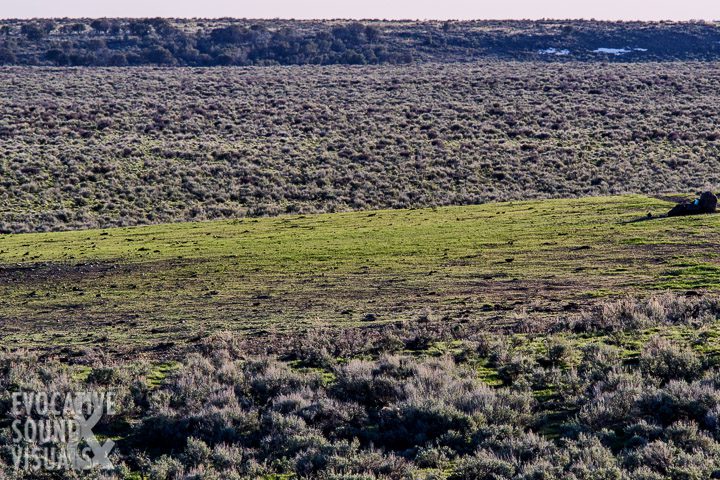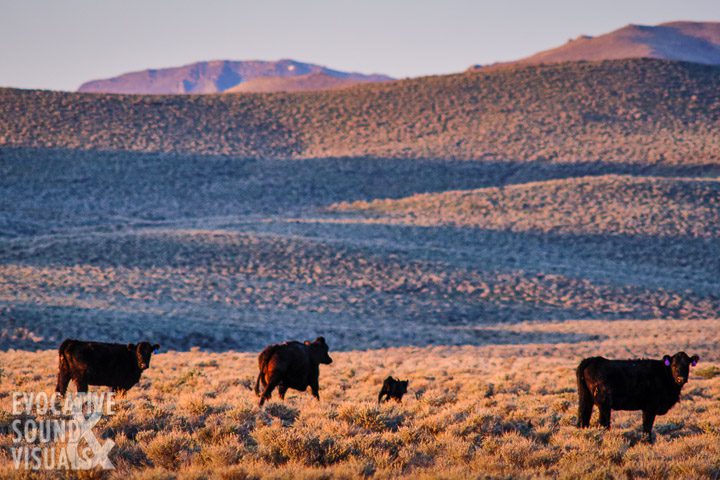Join me as I spend a cold April night under a full moon in the wide-open sagebrush steppe of southwestern Idaho. Listen to the bizarre sounds of male Greater sage grouse performing their annual courtship displays on ancestral mating grounds known as leks.

Recognized as threatened and declining, the lives of sage grouse are intertwined with the shrinking sagebrush habitat in which they live, eat and breed. Competition from overgrazing, escalating oil and gas development, increased human disturbance (think subdivisions and two-track roads to recreational sites) and climate change, all harm this 4-pound ground-nesting bird. Wildland fires during the summer months can wipe out sagebrush. Non-native cheatgrass, which spreads fast and dries quickly in the arid environment, moves in to fill the space, creating ever-increasing fuel sources. In spring and summer, sage grouse munch on insects, sagebrush shoots and flowers. But during cold fall and winter months, a sage grouse’s diet consists almost exclusively of sagebrush.

William Clark, while feasting on a fat Sturgeon, fresh anchovies and a bushel of wappetoe during his winter holdover at Fort Clatsop, describes the sage grouse in illustrious detail. In his journal entry dated March 2, 1806, he draws a full-page profile surrounded by text complete with a long pointed tail stretching down into the corner of the page. Clark referred to the large, chicken-like bird as the ‘cock of the Plains.’ The Corps of Discovery observed and documented these strange dancing birds many times during their journey.
Once, Greater sage grouse populations spread over a dozen western U.S. states. Today, the bellwether species has been reduced to half their historic range.
Sage grouse are by no means alone on the sagebrush steppe. They share this fragile ecosystem with Pygmy rabbits, voles, lizards, rattlesnakes, mule deer, Pronghorn, Townsend’s ground squirrels, coyotes and cattle. They are the baritones on the soundstage, accompanied by sage and Brewer’s sparrows, American ravens, sage thrashers, western red-tailed hawks, horned larks (which can be heard on the recording) and others.
I became fascinated by sage grouse on their leks for the first time in the mid-90s. I was on an early-morning photography assignment for the Casper Star-Tribune, off Hat Six Road east of Casper. From what I’ve read, this well-publicized lek (of which I am a guilty contributor) has since been encroached upon by human development. And so it goes.
I vowed that if I ever moved back West, I would look these fabulous birds up again. I came back a few weeks ago, armed with a camera, of course, but also with an audio recorder, many feet of XLR cable, plus a few microphones. Also packed into the car were a tent, camo gear, chicken soup, GORP, a thermos of lukewarm coffee and a good book I never had a chance to read.

Spring is the mating season on the lek. It’s a ladies’ market. Dominant males need to keep up. Larger males boastfully show off for the smaller hens, by fanning out their stiff, spiky brown tail feathers. Like awkward junior high schoolers on a dance floor desperately hoping to land a kiss. But that’s not the best part. Males have this awesome ability to enlarge and extend their chests by sucking up large amounts of air into two bright yellow throat sacs symmetrically placed in the center of their chest and opposite their black throats. This gulp of air is then emphatically released moments later. Each expulsion creates a booming, low-end explosive pop. The kind of pop you can make by putting your middle finger in the side of your mouth backward and flicking it out fast. This is quickly followed by the scraping sound of smooth white chest feathers as they expand and brush up against mottled black, brown and white rough-wing feathers. All this is swiftly repeated over and over. They usually approach a hen from the side, where their pops propagate the best.
I, too, was hoping to catch the best burps and was happy to be in the same vicinity as the lek. I had help locating it, in the form of accurate GPS coordinates supplied by some very kind biologists. But, there’s no green sign that says ‘Sage Grouse Lek Here.’ Leks can be fairly large and spread out. Locations can vary to a bit from season to season. Some, but not all, leks are trampled down sagebrush-free patches of ground. I didn’t see any definitive stage at my location. Perhaps I was a bit off.
I set up my tent around 6 p.m. Sunset is over 2-hours away. Next comes setting up my microphone, Binaural Bill. This would be his first big test. I slurp a few quick gulps of chicken noodle soup and water from my trusty old army canteen. Now I am taking in a beautiful view of the Owhyee Range rising in the distance. The setting sun casts dark shadows upon snow-capped peaks.
The full moon illuminates my tent from above while flickering colored lights from my audio recorder light it from below. The courtship performance would not begin until later, around 10:40 p.m. I am restless with anticipation, but when these birds get going, their song and dance routine will last all night. Off and on until shortly after dawn, and for usually close to an hour each time.
Unfortunately, the sage grouse and I shared space with a small herd of cows. There are mamas, babies and bulls. I saw them as I was driving up. How cute I thought as they slowly got up and lumbered out of my way. Then it began. Constant mooing. Back and forth. Plus the sound of crunching sagebrush as cows mosey along. Are they talking about me? Or are the haunting coyote calls I hear in the distance the topic of conversation? Will I be crushed while sandwiched into my sleeping bag listening with headphones on? Fortunately for my sanity, safety and the recording, the incessant mooing dies down as night rolls along.

Sage grouse were on the lek for over 8 hours. I never saw them, yet I could tell by sound alone they were moving about. The pace would increase and decrease in fits and starts. Probably as a result of aloof females coming and going. I loved it when they moved closer to my microphones, thrilled by the flurry of wings and the pop, pop popping of air sacs. The entire night was amazingly wind-free.
At first light, I slowly unzipped my tent to catch the sagebrush-infused scent of the crisp morning air mixed with a bit of cow. Out the door appeared the perfect view of the Owyhee Range, shifting in hues from blue to pink. Awestruck, I stood up, watching as the last two sage grouse flew off into the rising sun.
Further Reading:
- Read what the World Wildlife Fund has to say about the status of the Greater sage grouse.
- Read about the Grouse of the Lewis and Clark Expedition here, in the Washington State Historical Society’s Columbia magazine, and here, from the Discovery Lewis and Clark website.
- See more about cheatgrass here, from the Sage Grouse Initiative, an organization full of useful information
- The Cornell Lab is a great resource on sage grouse. Read this page, plus view this behind-the-scenes video from their time on a lek, including instructional slow-motion footage that is pretty awesome.
- Read about the Hat Six Road lek here, in a 2009 Casper Star-Tribune article.
- Learn more about what and who occupies the sagebrush steppe here, from Oregon State University’s rangeland science department, and here, from Wrangle, the World Rangeland Learning Experience.

